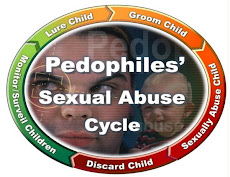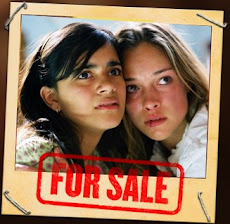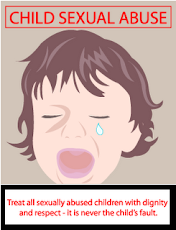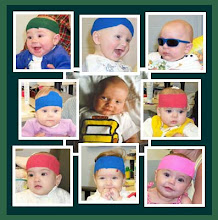Child-on-child sexual abuse
Provided by
DR WIDODO JUDARWANTO
CLINIC FOR CHILDREN
WE SMILE WITH YOU, WORKING TOGETHER SUPPORT ALL OF CHILDREN
Organized by Yudhasmara Foundation
JL TAMAN BENDUNGAN ASAHAN 5 JAKARTA PUSAT, JAKARTA INDONESIA 10210
PHONE : (021) 70081995 – 5703646
email : wido25@hotmail.com, cfc2006@hotmail.com
www.clinicforchildren.blogspot.com/
Child-on-child sexual abuse refers to a form of child sexual abuse in which a prepubescent child is sexually abused by one or more other children or adolescent youths, and in which no adult is directly involved. The term describes sexual activity between children that occurs without consent, without equality, or as a result of coercion.[1] This includes when one of the children uses physical force, threats, trickery or emotional manipulation to elicit cooperation. In some instances, the initiator exploits the other child's naivety. Child-on-child sexual abuse is further differentiated from normative sexual play or anatomical curiosity and exploration (i.e. "playing doctor") because of overt and deliberate actions directed at sexual stimulation or orgasm.[2] When sexual abuse is perpetrated by one sibling upon another, it is known as "intersibling abuse".[3]
Etiology
Young children who have not matured sexually are incapable of knowing about specific sex acts without an external source.[4][5][6] Consequently, children who initiate or solicit overtly sexual acts with other children most often have been sexually victimized by an adult beforehand,[7][4][5] or by another child who was in turn abused by an adult.[8][9] More than half have been victimized by two or more perpetrators.[6] In some instances, the perpetrating child was exposed to pornography or repeatedly witnessed sexual activity of adults at a very young age, as this also can be considered a form of child sexual abuse.[7]
Young children who have not matured sexually are incapable of knowing about specific sex acts without an external source.[4][5][6] Consequently, children who initiate or solicit overtly sexual acts with other children most often have been sexually victimized by an adult beforehand,[7][4][5] or by another child who was in turn abused by an adult.[8][9] More than half have been victimized by two or more perpetrators.[6] In some instances, the perpetrating child was exposed to pornography or repeatedly witnessed sexual activity of adults at a very young age, as this also can be considered a form of child sexual abuse.[7]
Prevalence
The incidence of child-on-child sexual abuse is not known with any certainty, similar to abuse by adults. It frequently goes unreported because it is not widely known of in the public[2], and often occurs outside of adults' supervision. Even if known by adults, it is sometimes dismissed as harmless.[2] In particular, intersibling abuse is under-reported relative to the reporting rates for parent-child sexual abuse,[3] and disclosure of the incest by the victim during childhood is rare.[10]
The incidence of child-on-child sexual abuse is not known with any certainty, similar to abuse by adults. It frequently goes unreported because it is not widely known of in the public[2], and often occurs outside of adults' supervision. Even if known by adults, it is sometimes dismissed as harmless.[2] In particular, intersibling abuse is under-reported relative to the reporting rates for parent-child sexual abuse,[3] and disclosure of the incest by the victim during childhood is rare.[10]
Effects
Children who were sexually victimized by other minors, including intersibling abuse, show largely the same problems as children victimized by adults, including anxiety, depression, substance abuse, suicide, eating disorders, post traumatic stress disorder, and difficulty trusting peers in the context of relationships.[1][11] Intersibling abuse often results in distortion of the victim's beliefs about child sexual abuse.[10]
Major factors that affect the severity of symptoms include the use of force or coercion, the frequency of the abuse, and the invasiveness of the act.[12] An increased risk of victimization later in life has also been reported.[13]
Children who were sexually victimized by other minors, including intersibling abuse, show largely the same problems as children victimized by adults, including anxiety, depression, substance abuse, suicide, eating disorders, post traumatic stress disorder, and difficulty trusting peers in the context of relationships.[1][11] Intersibling abuse often results in distortion of the victim's beliefs about child sexual abuse.[10]
Major factors that affect the severity of symptoms include the use of force or coercion, the frequency of the abuse, and the invasiveness of the act.[12] An increased risk of victimization later in life has also been reported.[13]
The media has reported on this phenomenon. In one instance, an eleven year old girl accused three boys age eight and nine of raping her.[14][15][16] Internet and reality show star Tila Tequila claims in an interview to have been molested by an 8 year old female friend when she was 5 years old.[4]
References
- Jon A. Shaw et al. (September, 2004). "Child on child sexual abuse: psychological perspectives," Child Abuse & Neglect Volume 24, Issue 12, December 2000, Pages 1591-1600.
- Loseke, Donileen R.; Gelles, Richard J. and Cavanaugh, Mary M. (2005). Current Controversies on Family Violence. Thousand Oaks, CA: Sage Publications Inc. ISBN 0-76192-106-0.
- John V. Caffaroa, Allison Conn-Caffaro. "Treating sibling abuse families". Aggression and Violent Behavior (Elsevier) Volume 10, Issue 5, July-August 2005, Pages 604-623.
- Bromberg, D. S., & Johnson, B. T. (2001). "Sexual interest in children, child sexual abuse, and psychological sequelae for children," Psychology in the Schools, 38(4), 343-355.
- Gray, A., Pithers, W.D., Busconi, A., & Houchens, P. (1999). Developmental and etiological characteristics of children with sexual behavior problems: Treatment implications. Child Abuse & Neglect, 23, 601– 621.
- Alison Gray et al. (October, 1997). Children with sexual behavior problems and their caregivers: Demographics, functioning, and clinical patterns,” Sexual Abuse: A Journal of Research and Treatment, Volume 9, Number 4 / October, 1997, p. 267-290.
- Marshall,W.L. (1997). Pedophilia: Psychopathology and theory. In D. R. Laws &W. O’Donohue (Eds.), Sexual deviance: Theory, assessment, and treatment (pp. 152–174). New York: Guilford.
- Wieckowski, E., Hartsoe, P., Mayer, A., & Shortz, J. (1998). Deviant sexual behavior in children and young adolescents: Frequency and patterns. Sexual Abuse: A Journal of Research and Treatment, 10, 293–303.
- Bonnie E. Carlson, PhD (December, 2006). " Sibling Incest: Reports from Forty-One Survivors ," Journal of Child Sexual Abuse: Volume 15, Issue 4, December 2006, Pages 19-34.
- Jane M. Rudd, and Sharon D. Herzbergerb. "Brother-sister incest—father-daughter incest: a comparison of characteristics and consequences". Child Abuse & Neglect (Elsevier) Volume 23, Issue 9, September 1999, Pages 915-928.
- Brown, Janelle C., Ph.D. (September, 2004). "Child-on-child sexual abuse: An investigation of behavioral and emotional sequelae," University of Pennsylvania, p. 1539.
- Catalina M. Arata (June 2002). Child Sexual Abuse and Sexual Revictimization,” Clinical Psychology: Science and Practice, Volume 9 Issue 2 / June 2002, p. 135-164.
.jpg)









.png)

Tidak ada komentar:
Posting Komentar